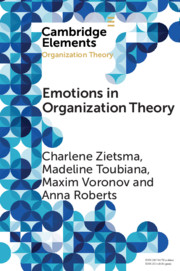Element contents
Emotions in Organization Theory
Published online by Cambridge University Press: 19 March 2019
Summary
Information
- Type
- Element
- Information
- Series: Elements in Organization TheoryOnline ISBN: 9781108628051Publisher: Cambridge University PressPrint publication: 11 April 2019
References
Accessibility standard: Unknown
Why this information is here
This section outlines the accessibility features of this content - including support for screen readers, full keyboard navigation and high-contrast display options. This may not be relevant for you.Accessibility Information
- 61
- Cited by
